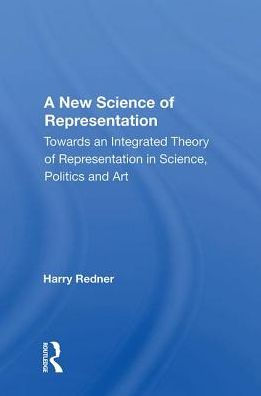A New Science of Representation: Towards an Integrated Theory of Representation in Science, Politics and Art
The astonishing aim of this bold and original study is no less than the construction of a comprehensive theory of culture–a theory that challenges many established approaches in disciplines such as philosophy, semiotics, sociology, political theory, aesthetics, and history itself. Building on the thesis that crucial changes in human cultural history correlate with fundamental transformations in modes of representation, Redner traces human development from primitive culture to that of the present age. He defines four modes of representation to account for the epochal stages in cultural history: fetishistic (primitive culture), iconic (early civilization), mimetic (the so-called Axial cultures), and representationalist (modernity from the Reformation to the present). Although there is much that is both enlightening and provocative about the cultural past here, it is our present age that most interests Redner. He argues that its fundamental mode, representationalism mediated by electronics, is still essentially modernist. Thus Redner denies that our culture can meaningfully be called postmodern. In the tradition of Vico, Comte, Weber, Norbert Elias, and Charles E. Lindblom, A New Science of Representation is a major statement by an original thinker on both the nature of cultural development and the interpretation of our confused present.
"1124709146"
A New Science of Representation: Towards an Integrated Theory of Representation in Science, Politics and Art
The astonishing aim of this bold and original study is no less than the construction of a comprehensive theory of culture–a theory that challenges many established approaches in disciplines such as philosophy, semiotics, sociology, political theory, aesthetics, and history itself. Building on the thesis that crucial changes in human cultural history correlate with fundamental transformations in modes of representation, Redner traces human development from primitive culture to that of the present age. He defines four modes of representation to account for the epochal stages in cultural history: fetishistic (primitive culture), iconic (early civilization), mimetic (the so-called Axial cultures), and representationalist (modernity from the Reformation to the present). Although there is much that is both enlightening and provocative about the cultural past here, it is our present age that most interests Redner. He argues that its fundamental mode, representationalism mediated by electronics, is still essentially modernist. Thus Redner denies that our culture can meaningfully be called postmodern. In the tradition of Vico, Comte, Weber, Norbert Elias, and Charles E. Lindblom, A New Science of Representation is a major statement by an original thinker on both the nature of cultural development and the interpretation of our confused present.
180.0
In Stock
5
1

A New Science of Representation: Towards an Integrated Theory of Representation in Science, Politics and Art
497
A New Science of Representation: Towards an Integrated Theory of Representation in Science, Politics and Art
497
180.0
In Stock

Product Details
| ISBN-13: | 9780367009229 |
|---|---|
| Publisher: | Taylor & Francis |
| Publication date: | 06/07/2019 |
| Pages: | 497 |
| Product dimensions: | 5.81(w) x 8.69(h) x (d) |
From the B&N Reads Blog
